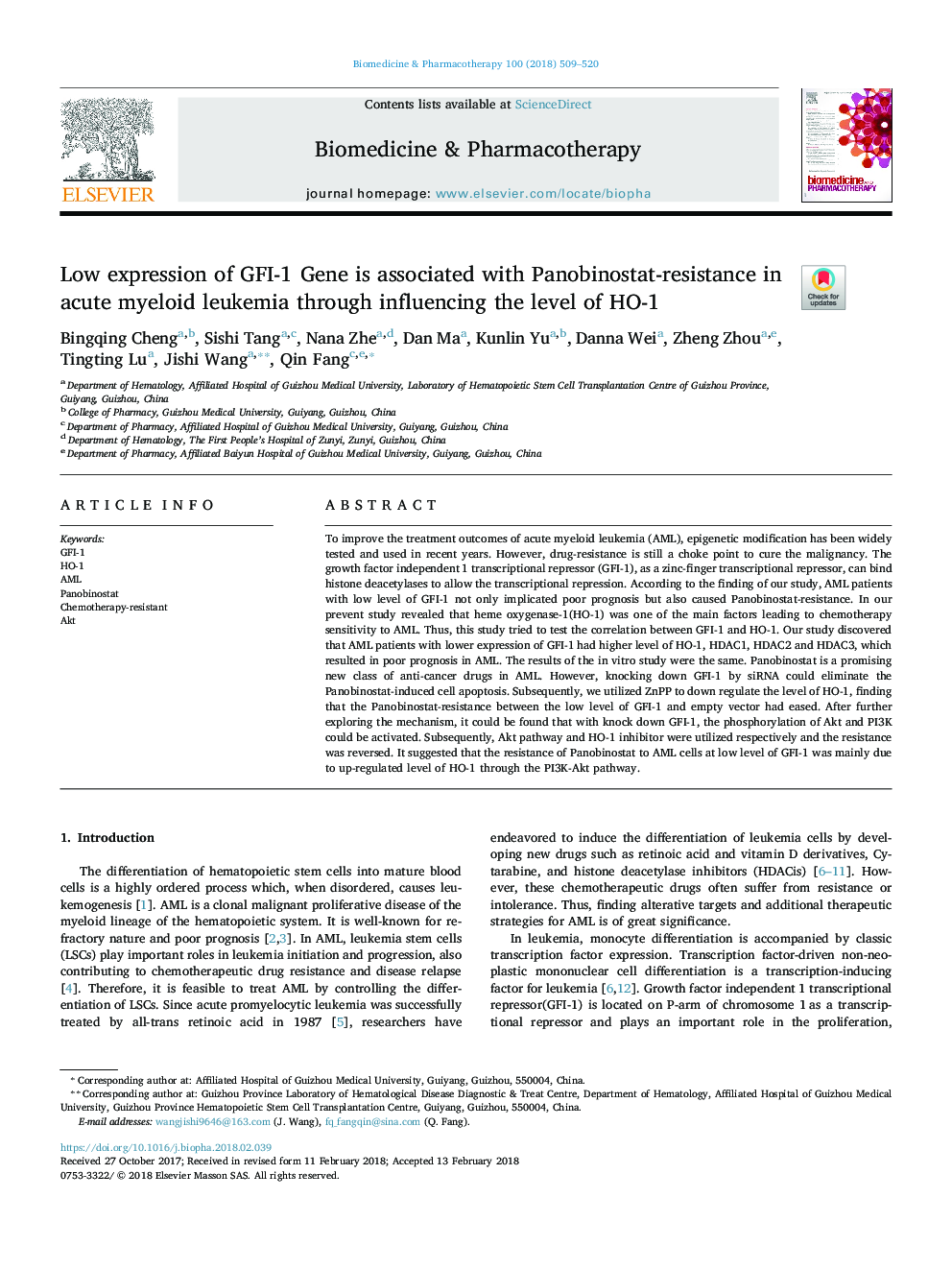| Article ID | Journal | Published Year | Pages | File Type |
|---|---|---|---|---|
| 8525932 | Biomedicine & Pharmacotherapy | 2018 | 12 Pages |
Abstract
To improve the treatment outcomes of acute myeloid leukemia (AML), epigenetic modification has been widely tested and used in recent years. However, drug-resistance is still a choke point to cure the malignancy. The growth factor independent 1 transcriptional repressor (GFI-1), as a zinc-finger transcriptional repressor, can bind histone deacetylases to allow the transcriptional repression. According to the finding of our study, AML patients with low level of GFI-1 not only implicated poor prognosis but also caused Panobinostat-resistance. In our prevent study revealed that heme oxygenase-1(HO-1) was one of the main factors leading to chemotherapy sensitivity to AML. Thus, this study tried to test the correlation between GFI-1 and HO-1. Our study discovered that AML patients with lower expression of GFI-1â¯had higher level of HO-1, HDAC1, HDAC2 and HDAC3, which resulted in poor prognosis in AML. The results of the in vitro study were the same. Panobinostat is a promising new class of anti-cancer drugs in AML. However, knocking down GFI-1 by siRNA could eliminate the Panobinostat-induced cell apoptosis. Subsequently, we utilized ZnPP to down regulate the level of HO-1, finding that the Panobinostat-resistance between the low level of GFI-1 and empty vector had eased. After further exploring the mechanism, it could be found that with knock down GFI-1, the phosphorylation of Akt and PI3K could be activated. Subsequently, Akt pathway and HO-1 inhibitor were utilized respectively and the resistance was reversed. It suggested that the resistance of Panobinostat to AML cells at low level of GFI-1 was mainly due to up-regulated level of HO-1 through the PI3K-Akt pathway.
Keywords
Related Topics
Health Sciences
Medicine and Dentistry
Oncology
Authors
Bingqing Cheng, Sishi Tang, Nana Zhe, Dan Ma, Kunlin Yu, Danna Wei, Zheng Zhou, Tingting Lu, Jishi Wang, Qin Fang,
